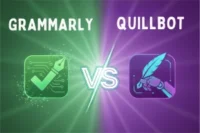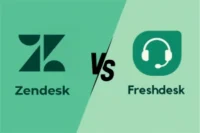Key Differences Between PHP and HTML
Published: 26 Dec 2024
When it comes to building websites, two essential tools often come into play: PHP and HTML. Both are key players in web development, but they serve very different purposes. PHP is a powerful server-side scripting language used to create dynamic and interactive websites, while HTML is a simple, client-side markup language that structures and displays web pages.
Understanding the differences between these two is important for anyone exploring the world of coding and web design. In this article, we’ll break down how PHP and HTML work, their key features, and why they are both crucial for creating modern websites.

PHP vs HTML: Key Comparison
Here is the list of main differences between PHP and HTML:
- Nature and Purpose
- Syntax and Structure
- Role in Web Development
- Dynamic vs Static Content
- Learning Curve and Usability
Now, we discuss all these differences one by one in detail:
Nature and Purpose
PHP (Hypertext Preprocessor): A server-side scripting language designed for backend development. Used to handle logic, manage data, and perform dynamic tasks like interacting with databases. Runs on the server, meaning the output is sent to the user’s browser after processing.

HTML (Hypertext Markup Language): A client-side language used to structure web pages and display content. Focuses on creating the layout of a webpage using elements like headings, paragraphs, images, and links. Works directly in the user’s browser without involving a server for processing.
Syntax and Structure
PHP: Syntax is more complex, similar to programming languages like C or JavaScript. Requires specific commands and logical statements (e.g., loops, functions, and conditionals). Example: <?php echo “Hello, World!”; ?> prints “Hello, World!” dynamically.
HTML: Uses a declarative syntax with predefined tags like <h1>, <p>, and <img>. Relies on a tree-like structure to define the layout of content. Example: <h1>Hello, World!</h1> directly displays “Hello, World!” on the page.
Role in Web Development
PHP: Manages backend tasks such as user authentication, form processing, and data retrieval. Adds interactivity by generating web pages dynamically based on user input or actions. Frequently used in content management systems like WordPress.

HTML: Focuses on the frontend, determining how content appears visually to users. Ensures accessibility by defining elements that browsers can render and interpret. Acts as the “skeleton” of a webpage, holding content together.
Dynamic vs Static Content
PHP: Creates dynamic web pages by generating unique content for each user. Allows for real-time updates and customization, like displaying a user’s name after login. Example: Showing a personalized greeting: “Welcome, John!”
HTML: Displays static content that remains the same for every user. Ideal for fixed information like headers, footers, and general page layouts. Example: A contact page with predefined text and links.
Learning Curve and Usability
PHP: Requires a basic understanding of programming concepts and logic. Developers often use it alongside other languages like SQL and JavaScript. Best for those looking to manage the server-side of websites.

HTML: Beginner-friendly with a straightforward syntax that’s easy to learn. Serves as the foundation for web design and is essential for all web developers. Can be mastered without prior coding experience.
How They Complement Each Other
- PHP generates dynamic content, which is embedded into HTML to present it to users.
- For example, PHP might fetch a user’s name from a database, and HTML will display it as: “Welcome, John!”
- HTML ensures a consistent and user-friendly layout, while PHP adds logic and interactivity to create a complete web experience.

By working together, PHP and HTML make it possible to build websites that are both functional and visually appealing, meeting the demands of users and businesses alike.
Conclusion
PHP and HTML are both fundamental tools in web development, each serving a distinct and important role. HTML acts as the backbone of every webpage, providing structure and layout that browsers can render for users to see. PHP operates behind the scenes, managing server-side tasks to deliver dynamic and interactive content. Together, they create seamless, user-friendly experiences on the web.
In short, PHP and HTML complement each other beautifully, making them indispensable for modern website creation. Whether you’re building a basic blog or a sophisticated e-commerce platform, knowing when and how to use these technologies will set you on the path to becoming a successful web developer.
FAQs About PHP and HTML
Here are some of the most FAQs related to PHP and HTML:
PHP is a server-side scripting language used to create dynamic content and interact with databases. HTML is a client-side markup language used to structure and display static web pages.
PHP can function independently for server-side logic, but it’s commonly used with HTML to create complete web pages. HTML provides the structure, while PHP handles backend operations.
Yes, PHP is more complex because it involves programming logic and syntax. HTML is simpler and easier for beginners since it uses predefined tags for web page structure.
Both are essential for building websites. HTML structures the content, while PHP adds dynamic functionality like user login systems and database interactions.
They don’t always have to be used together, but combining them allows developers to create dynamic, user-friendly websites with structured content.
No, HTML cannot handle backend tasks. It is purely a markup language for designing the frontend. PHP is required for backend processes.
A login form is a common example: HTML creates the form, and PHP processes the login credentials to authenticate the user.
HTML is more suitable for beginners because it has a simpler syntax and is easy to learn. PHP requires programming knowledge and logical thinking.
Yes, both PHP and HTML are widely used in modern websites. PHP powers dynamic features, while HTML ensures proper page structure and design.
Yes, you can use HTML without PHP to create static websites. However, learning PHP allows you to add dynamic and interactive features.

- Be Respectful
- Stay Relevant
- Stay Positive
- True Feedback
- Encourage Discussion
- Avoid Spamming
- No Fake News
- Don't Copy-Paste
- No Personal Attacks

- Be Respectful
- Stay Relevant
- Stay Positive
- True Feedback
- Encourage Discussion
- Avoid Spamming
- No Fake News
- Don't Copy-Paste
- No Personal Attacks





